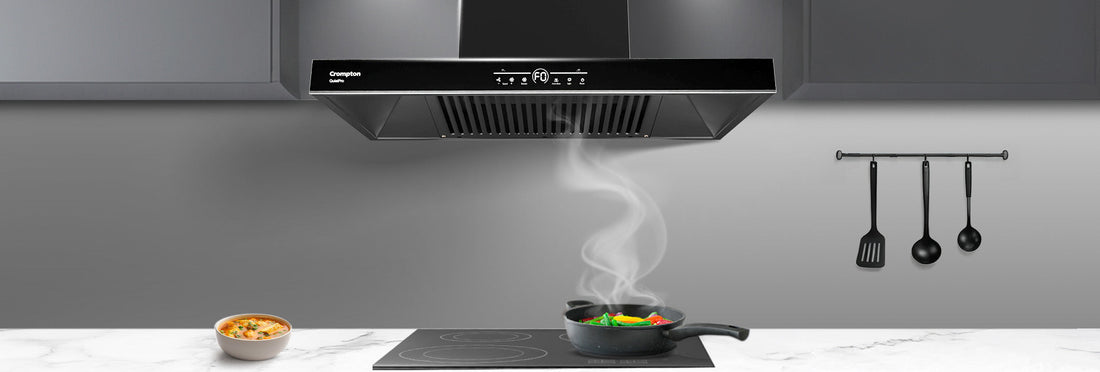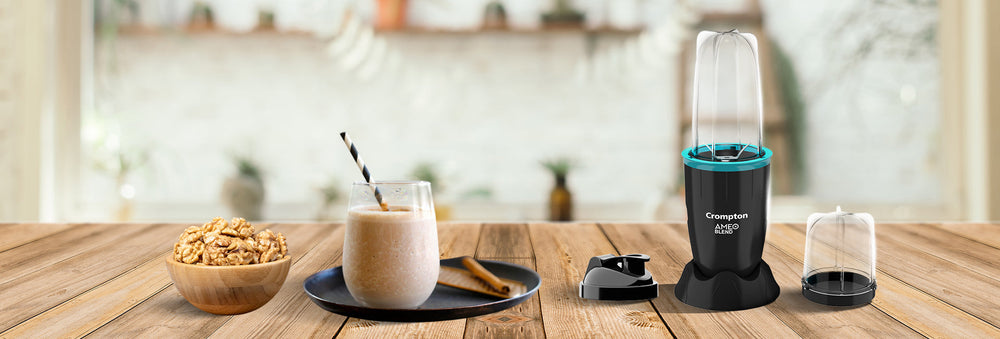Hassles of Kitchen Chimney Maintenance: Common Challenges

-v1760438029233.jpg?800x800)
Cooking in an Indian kitchen can get intense with sizzling tadkas, deep-frying and rich spices, often leaving behind smoke, fumes and grease. That is where a kitchen chimney comes in handy.
While there are many features you need to consider when buying a new chimney, one key decision you will need to make is choosing between auto clean vs manual clean chimneys. At first glance, both options may seem similar. They remove smoke, oil particles and odours from your kitchen. However, their cleaning process makes all the difference to decide between manual vs auto clean chimneys. It often comes down to how easily you can remove grease, control odour and keep suction consistent over time.
What is a Manual Clean Chimney & How Does it Keep Your Kitchen Clean?
A manual chimney is a traditional kitchen chimney equipped with baffle or mesh filters. These filters trap smoke, oil particles and grease during cooking. This reduces suction power and makes the chimney less effective unless you scrub them regularly.
While it does take a bit more effort, keeping your manual chimney in good condition can really help keep smoke and grease at bay. Since you are the one cleaning the filter, you can ensure it is done thoroughly, giving you better control over hygiene. They are also more affordable upfront and effective for homes where cooking is moderate or less oily.
Here is what happens to a Manual Chimney over time:
-
In the first few weeks, manual chimneys perform well, but grease starts coating the filters. This results in reduced airflow.
-
If not cleaned regularly, this can cause sticky deposits in the ducts.
-
That is why the effectiveness of cleaning in a manual chimney depends entirely on how consistently and thoroughly you clean the filters. Missing a cleaning cycle leads to suction dropping noticeably, leaving smoke and odour lingering in the kitchen.
What is Auto Clean Chimney & How Does it Maintain Performance?
An auto clean chimney is a modern kitchen appliance that uses a thermal cleaning mechanism to remove oil and grease build-up automatically. Auto clean chimneys often come with no filters. Smoke and air are sucked directly through a high-efficiency motor system, while oil particles are directed toward an oil collector.
For those who love to cook often, this feature makes sure the chimney stays efficient without requiring much effort.
Here is what happens to an auto clean chimney over time:
-
Since there is no filter clogging, suction remains consistently high, even after weeks of cooking.
-
Oil particles are collected aways from motor and ducts. This reduces sticky build-up and keep the performance consistent.
-
The chimney cleans itself with just a press of a button, keeping consistent suction power.
Here is how you can activate the cleaning mechanism of an auto-clean chimney:
-
Activate the auto clean button (usually once every 15–20 days). This triggers a heating element inside the chimney.
-
This built-in kitchen appliance heats up to a high temperature. This melts the sticky oil and grease, which drips into the oil collector below.
-
The removable oil collector gathers all the liquefied grease. Easily take out the tray and rinse with water, no scrubbing required.
Auto Clean vs Manual Clean Chimney: Choosing the Right Chimney for Your Kitchen
The choice between an auto clean and manual clean kitchen chimney, depends on your kitchen setup, cooking style, lifestyle and how much maintenance you are willing to take on. Both options keep your kitchen clean and smoke-free. You need to consider a few key factors to make your decision:
-
Cooking Style & Frequency
- Frequent and oily cooking (like Indian tadkas, frying or grilling) produces a lot of smoke and oil particles. Auto clean chimneys handle this better with their thermal cleaning mechanism and oil collector.
- Light or occasional cooking (boiling, steaming, baking) may not necessarily generate much grease. Manual chimneys with baffle filterscould be sufficient.
-
Cost and Maintenance: Short-Term vs Long-Term
-
Manual chimneys are usually more cost-effective upfront. However, frequent cleaning, servicing and wear on filters can lead to higher maintenance costs over time.
-
Auto clean models may have a higher initial cost, but you can save moneyin the long run due to lower maintenance and a longer lifespan.
-
-
Design and Features
-
Auto clean chimneys boast sleek, modern designs packed with filterless technology, touch controls, motion sensors, LED lights and quiet BLDC motors. These are perfect for modular kitchens.
-
Manual clean chimneys offer a more straightforward yet sturdy option. They feature stainless steel or glass finishes, baffle or mesh filters and simple controls, making them both reliable andbudget friendly.
-
Crompton offers stylish models with sleek designs, motion sensors, touch controls, and BLDC motors for quiet operation, like the GrandArt Box 90cm Filterless Chimney with BLDC Motor.
Experience Effortless Cooking with Crompton Chimneys
Cooking should be fun and that’s exactly what Crompton chimneys aim to deliver. With features like Intelli AutoClean and Filterless Technology, these chimneys take care of the grease, smoke and grime on their own, allowing you to concentrate on cooking. Here are the features that makes Crompton chimneys worth considering:
-
Intelli AutoClean: This feature automatically melts away oil and grease after 30 hours of use, funnelling it into a tray that is super easy to empty.
-
Filterless Technology: Oil and grease are collected straight into a tray, which helps prevent clogging and keeps the suction power strong and steady.
-
BLDC Motor: It is designed to operate quietly, making it up to 10dB quieter than traditional chimneys. With 9 different speed settings and a powerful suction capacity of 2000 m³/hr, it effectively removes smoke and grease while keeping your kitchen comfortable.
-
Gesture Control: Various models of Crompton chimneys feature smart motion sensors that pick up your hand movements. This allows you to operate the chimney without touching it, which helps keep the controls clean.
-
SmartON Technology: This technology uses advanced sensors to detect temperature changes when you start cooking, automatically turning on the chimney. So even if you forget to switch it on, your kitchen stays smoke-free.
Make Your Kitchen Smarter with Crompton Chimneys
The kitchen chimney manual vs auto clean debate depends on your cooking habits, lifestyle, and maintenance preference. Explore modern, high-performance options in kitchen appliances to find one that fits your needs. Whether you choose the QuietPro Inverter Motor Curved 75cm Filterless Chimney, IntelliMotion Curved 90cm Filterless Chimney or GrandArt Box series, upgrading to a high-tech chimney can transform your kitchen experience.
Frequently Asked Questions on Auto Clean vs Manual Clean Chimneys
-
Which is better: auto clean or manual clean chimney?
It depends on your needs. Auto clean chimneys offer effortless maintenance and are suitable for heavy, oily cooking. Manual chimneys are more affordable upfront but require regular cleaning and upkeep.
-
Are auto clean chimneys more expensive than manual ones?
Auto clean models have a higher upfront cost due to their advanced features. However, they often prove cost-effective in the long run due to lower maintenance needs.
-
How often should I clean my kitchen chimney?
For manual chimneys, clean the filters every 2 to 3 weeks or more frequently if you cook oily or spicy foods. For auto clean chimneys, use the auto clean function once every 15 to 20 days and clean the oil collector as needed.

 Read Previous Blog
Read Previous Blog


 at 9228880505 or write to us at
at 9228880505 or write to us at 